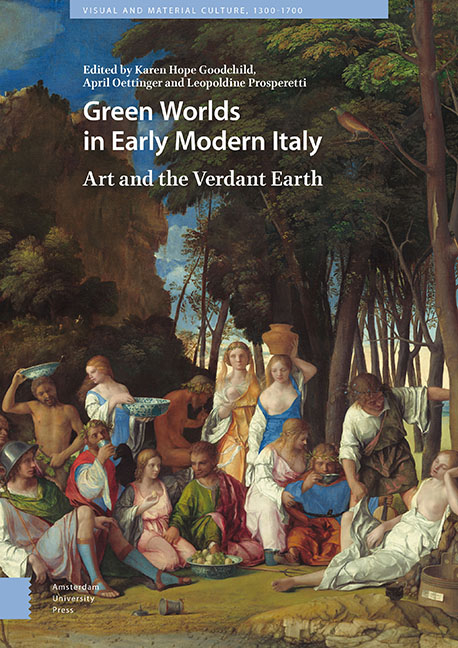Book contents
7 - Titian: Sylvan Poet
Published online by Cambridge University Press: 21 November 2020
Summary
Abstract
“…that Titian loved wood-lands” is not commonly known. Yet his celebrated St. Peter Martyr altarpiece was hailed as the third perfection of the Renaissance, after Michelangelo’s perfection of human figures, and Raphael's grace and beauty. Because of Titian’s gift for showing how a fresh vision of nature can be translated into visual poetry that enriches the pictorial subject, he was known as the Sylvan Poet. This essay explores Titian's contribution to the Green Worlds of the Renaissance, through the analysis of sylvan imagery in his drawings, prints, and in some of his most beautiful paintings, including several of his Bacchanals, the Bacchus and Ariadne and, finally, his vision of a new day in the Noli me tangere.
Keywords: Titian, Woodland imagery, sylvan poetics, Bacchanals, ecopoetics
Sylvan scenery never palls.
– Disraeli
A Corner of the Woods
At first sight this drawing in the Metropolitan Museum of Art seems typical of an Old Master nature study (Fig.7.1). It begs admiration for its tonality, lyrical naturalism and the deft way in which trees and shrubs are compressed into a corner of the woods.
During the seventeenth century – the age of grandiose landscapes filled with trees – visual poets such as Claude Lorrain (1600–82), Peter Paul Rubens (1577–1640), Nicolas Poussin (1594–1665), and the wistful Watteau (1684–1721) left sheet upon sheet filled with studies of woodland imagery which to this day cram the cabinets of museums around the world. Many of them owe much to the precocious study which now resides in New York.
Produced in c.1514, the drawing is in fact a pioneering effort by the Venetian painter Titian (c.1480–1576) to create woodland scenery that is true to nature and leaves behind the Medieval vision of trimmed trees in enclosed gardens. It is a prelude to the impressive stand of mixed trees in the altarpiece of Saint Peter Martyr (1529), one of his early masterpieces, which sadly perished in a fire in 1867 (Fig. 7.2).
‘That Titian loved woodlands’, wrote Josiah Gilbert, ‘is evident in his drawings’. That he was a true landscape painter, however, is more problematic. As Federico Zeri – dean of Italian art history – has pointed out, Titian never created a ‘real’ landscape, but he was admired for woodland imagery, often in the spirit of bucolic poetry, which was rich in sylvan themes.
- Type
- Chapter
- Information
- Green Worlds in Early Modern ItalyArt and the Verdant Earth, pp. 155 - 174Publisher: Amsterdam University PressPrint publication year: 2019



